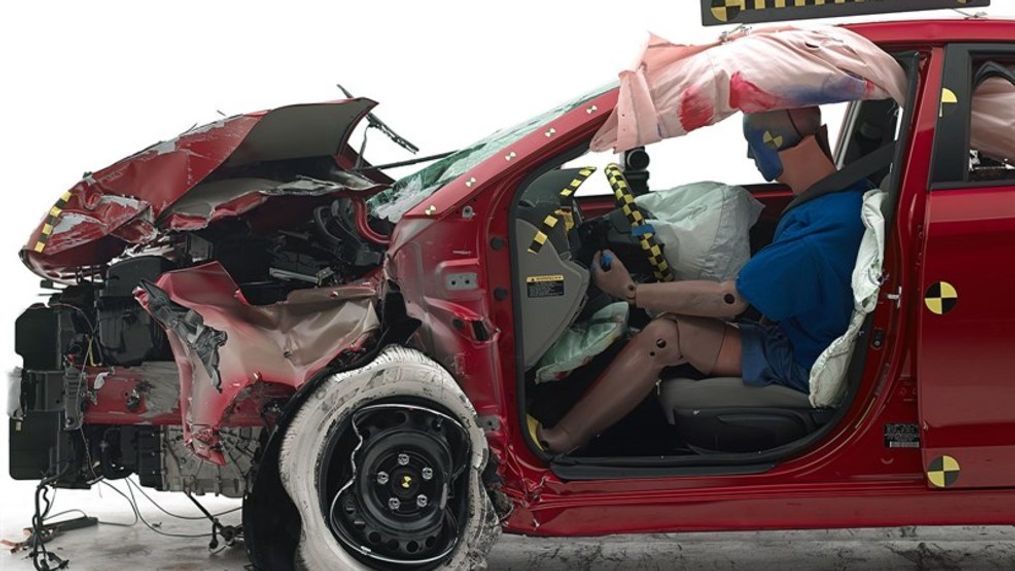What do safety ratings really mean?

In our weekly new car reviews, we talk a lot about safety. We mention standard and available safety features on each car and discuss safety ratings from a couple different agencies.
OK, so a car gets "Five Stars" or a "Top Safety Pick," but what does that actually mean? Well, it depends on the agency.
The two agencies we cite are the National Highway Traffic Safety Administration (NHTSA) and the Insurance Institute for Highway Safety (IIHS). The first is a government-run agency, and the second is an independent, nonprofit organization. So, when possible, we like to quote both. And in most cases, their results agree with each other.
So, if a car gets a 5-Star rating or a Top Safety Pick award, does that mean you won't get injured in a crash? No. It just means it's safer than other cars on the road.
The NHTSA, for example, says that a 5-Star rating simply means that the injury risk for that vehicle is much less than average. There is no real explanation of what exactly "average" is, but it's clear that 5 is better than 4 is better than 3 - you get the idea.
The IIHS, however, uses a system of Good, Acceptable, Marginal and Poor for its crash tests. In the "understanding the ratings" section on the frontal crash test page, IIHS explains that after an analysis of 14 years worth of data, a vehicle with a Good rating means that the driver is 46 percent less likely to die compared with a driver of a vehicle rated Poor.
So, as you can see - even if a vehicle gets 5 Stars or a Good rating - there is still a chance of injury in a crash. It's just less than other cars on the road.
Both the NHTSA and IIHS perform their tests differently, and even if the crash test is labeled as "front" - it's not really an apples-to-apples comparison.
Case in point: The NHTSA front test covers the full width of the vehicle, whereas the IIHS runs offset frontal tests, which means only one side of a vehicle's front end will hit the barrier.
This is why a vehicle like the 2018 Ford Escape will get an Acceptablerating in the small overlap front crash test from IIHS, but it will get 5 Stars in a frontal crash from NHTSA. Just as often, you'll look at a vehicle like the 2018 Toyota Camry that gets the "Top Safety Pick+" award from IIHS and has an overall 5-Star rating from NHTSA.
Thus, we end up citing both NHTSA and IIHS when both ratings are available. This gives a better overall picture of what the safety of a vehicle is.
NHSTA gives star ratings for frontal, side and rollover crashes, then averages them together to give you an "Overall" star score.
IIHS displays the scores for small front overlap crashes, moderate front overlap crashes, side crashes, roof strength, head restraints & seats and front crash prevention.
There really isn't much overlap between the two agencies.
Though NHTSA doesn't provide a list of all cars that get 5-Star ratings, the IIHS does keep a running list of its Top Safety Pick and Top Safety Pick+ awards - which makes it a great place to start if you're looking at safety as your No. 1 concern.
To be a TSP, a vehicle must earn Good ratings in the driver-side small overlap front, moderate overlap front, side, roof strength and head restraint tests as well as receive an Advanced or Superior rating for front crash prevention and an Acceptable or Good headlight rating.
The front crash prevention and headlight ratings are relatively new additions to the TSP tests, and while at first they were only used to identify TSP+ candidates, safety ratings for both tests are now requirements for both awards.
New for 2017, IIHS added a passenger-side crash test in order to push manufacturers to pay attention to the safety of front passengers as well as the driver. So, in addition to achieving all the requirements for TSP status, only vehicles with Good headlight ratings and Good or Acceptable ratings in the passenger-side crash tests will receive a TSP+ award.
An additional item to note: Vehicles are only considered a TSP or TSP+ when they are appropriately equipped -- sometimes with optional equipment. For example, if a vehicle is not equipped with front crash prevention, it cannot be considered to be either a TSP or TSP+ vehicle.
Both NHTSA and IIHS have started sharing videos on YouTube, and this gives some fantastic insight into the agencies and how they do testing as well as the tests themselves. Want to watch an eye-opening video? Watch the IIHS video about how miserably most minivans do in small overlap front crash tests. Yikes!
While automakers have made huge strides in safety technology - especially with agencies like NHTSA and IIHS monitoring their every move - there's no replacement for good drivers who don't get districted. Remember: Even if a car gets a Good rating, it just means that the driver is 46 percent less likely to die compared with a driver of a vehicle rated Poor.
_______________________________________
You can also find Auto Matters onFacebook,TwitterandGoogle+. Let's continue the conversation!
